Trujillo, Peru – At least for now, this is my roundup post on Trujillo and its food, and meeting Henry’s family. I’m going to let the photos speak for themselves for the most part… these are some of the highlights of the visit.
We spent an hour at a horse show one afternoon at a local riding school, watching the Peruanos al Paso, the famed horses of the Trujillo region. They have an odd gait that’s apparently genetic, or longterm bred into them, that’s really interesting to watch – I’m sure folks who are more into horses have insights into just exactly what it is about them, all I know is the show was captivating.
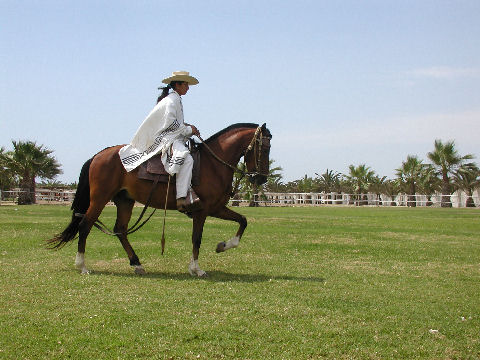
I finally got to try chicha de jora… now, this is the nearly standard drink of the Puno and Cuzco area and other places in the mountains. But for some reason, every restaurant we went to was either out of it or didn’t offer it – too peasant for them I guess. It’s a cloudy fermented corn drink that’s quite good. One thing of note, when you’re in the mountains, you’ll see homes with either blue or red plastic bags tied around long sticks out front. The red ones (of which none of my photos came out well) mean that fresh chicha is available – you stop by, and for a sole or two, get a to-go container – fits right in with that local drinking and driving policy, or perhaps hang out and have it there. We always passed these places while on tour buses, so didn’t get to stop and sample – something the tour bus companies ought to consider! The blue plastic bags mean that freshly baked bread is available.
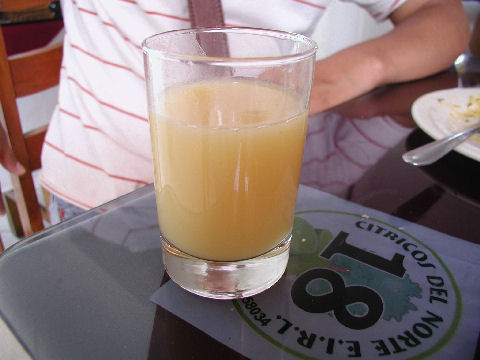
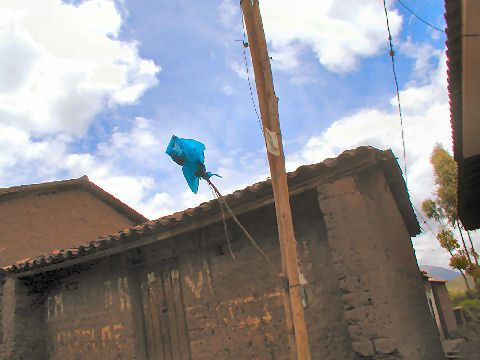
We had a fantastic lunch in Trujillo at a place called El Paisa in La Libertad, complete with a band playing local folklore music (and not touristy, it’s for locals) and amazingly good food – average price about 9 soles per plate – we sampled ceviche, sudado, chicharron de pescado, and arroz con mariscos. This is the first place I’d seen ceviche served with local seaweed, a common addition in Trujillo…
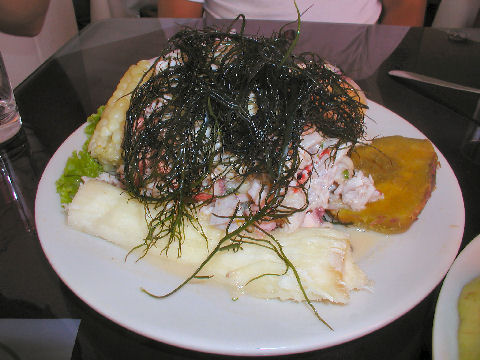
Some of the best eating in Trujillo, as I mentioned in a previous post, seems to be at the beach. Whether it’s ambulatory vendors or the little dining shacks that line the beaches, it’s a great place to sample pretty much any of the local cuisine. Here, a cangrejo reventado, stewed crabs – freshly collected right in the waters at the beach, spicy, and perfect…
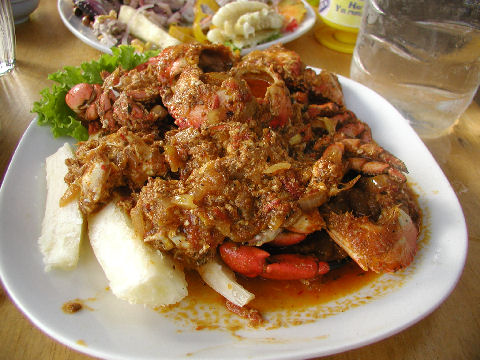
At another of the beaches, there were stands serving up anticuchos – grilled skewers of chicken gizzards and hearts, or other meats if you aren’t into the “parts”, and lots of good fried stuff – papas rellenas, picarones, cachanga – large mashed potato croquettes filled with a spicy ground beef and pepper filling, pumpkin donuts with syrup, and large flat bread, respectively…
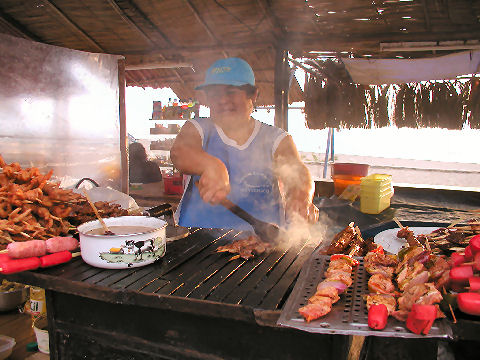
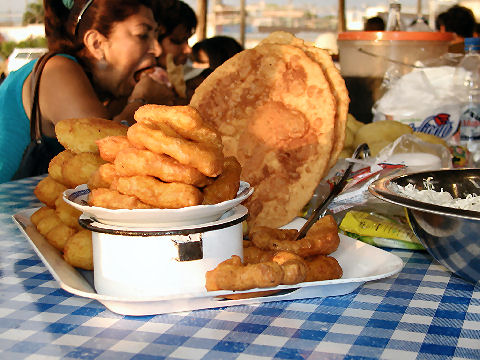
Dining out with Maria and Violeta, two of Henry’s sisters – we went to this place in the middle of some side street in the barrio, El Buen Palador, that serves only two dishes – and huge portions – for four of us, we ordered a half portion of mollejitas al ajo and cecinas – the former a platter of chicken gizzards sauteed in garlic (also available al sillao, or sauteed in soy sauce), the latter, buried under the onions there, a sort of pork jerky – thinly sliced, chewy, and spicy – each served with a plate of yuca – these two half orders plenty to feed the four of us – coming in at about 10 soles a platter. And oh, so good…
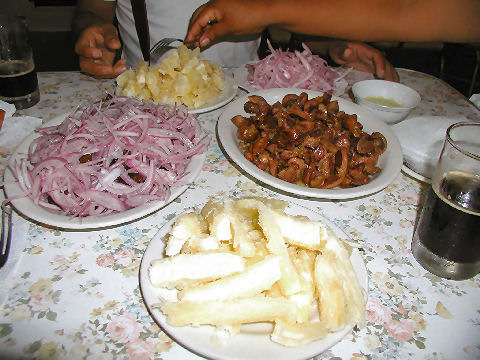
Making sudado, a fish stew that includes all the parts of the fish – heads, tails, etc., with his sister Violeta; and making ají de gallina with his sister Maria – both of them eager to teach someone who was actually interested enough to learn…
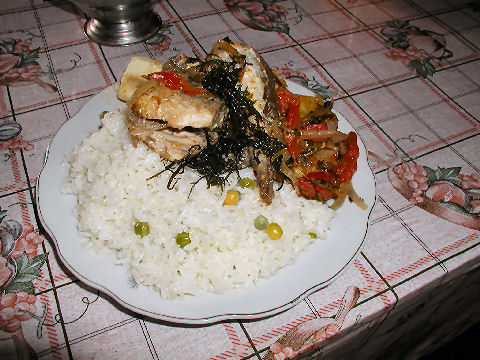
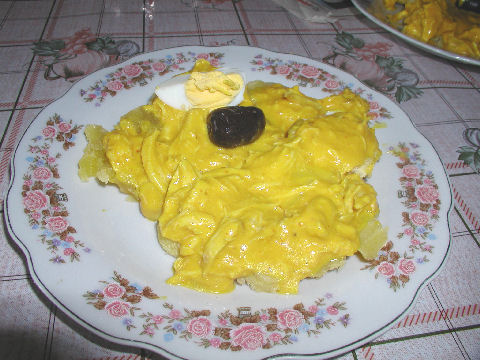
And last, but by no means least, the opportunity to meet Henry’s family and see where he came from. These people, now my family as well, warmly welcomed me into their homes and their hearts. It was truly difficult to say goodbye when we left after a week’s visit… It’s a shame I don’t have any pictures of the whole family (or as much as live locally), but there was no one time when everyone was together – people came and went throughout the days – with three sisters and a brother who live in the neighborhood, plus several dozen nieces, nephews, cousins, and an aunt, we were never shy on people. And that doesn’t begin to touch the people who live further away – his father in a mountaintop pueblito about an eight hour drive away, a sister and more nieces and nephews in Spain, and a few others scattered around other parts of Peru… it’s heartbreaking to see the level of poverty they live in, but heartwarming to see how they pull together as a family and make things work, one way or another – there’s always food on the table, regardless of how basic, and anyone in the family is always welcome to drop by at any other member’s home…
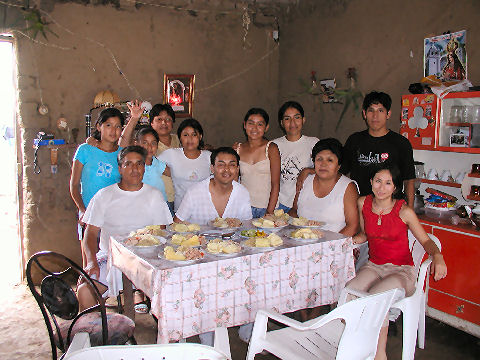
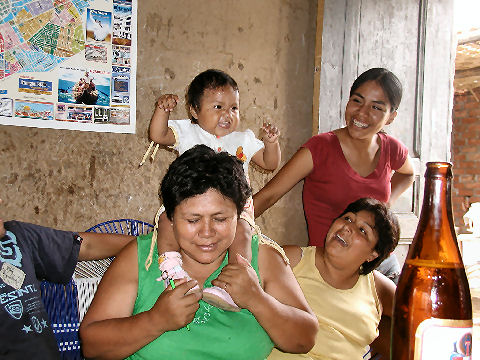
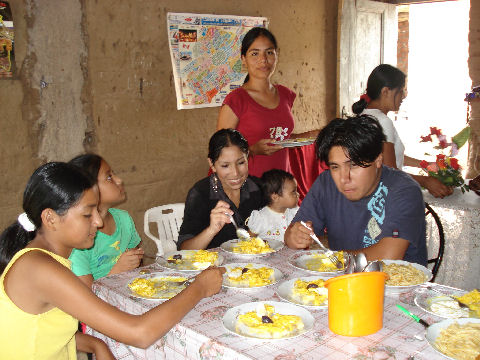
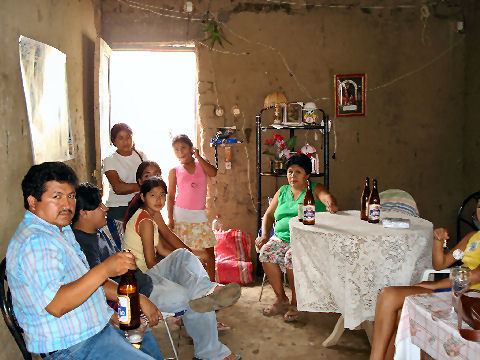
What a great blog entry, Dan. The warmth and affection of Henry’s family comes right through. So much for the theory that one needs to be wealthy to be happy and loving; although, I still feel it helps in certain instances. Not that I’d know. And them chicken gizzards look downright tasty. Normally, I’m not a gizzards guy, but I’d try those. And please send me some of that fermented corn drink.
[…] to cater to some unknown palates. But, it was enough for us to go with the idea. I’d spent one day with one of Henry’s sisters learning to make the dish – which reminds me I should make a post […]
[…] as it sounds like taxonomic nomenclature, simply means “burst crab”. I got to taste this dish once on the beach in Trujillo and loved it, so when I spotted a big pile of fresh crabs in a Barrio […]
[…] end, to one of two – my look back at two years of blogging and my look back at our last day or so visiting Henry’s family in Trujillo, Perú. The former was, perhaps, more intellectually interesting, the latter, far more emotional, and so, […]
Thank you God I found your blog. It remainds me my city. Trujillo.
I will recommend your blog to all my friends.
Thanks again.
nice entry! …comida trujillana is great!!!
[…] of cangrejo reventado, more or less – we don’t have all the right ingredients here for the real thing, but I’ve come up with a reasonably acceptable alternate […]
[…] you look at the second from the bottom photo here, the young girls to the left in yellow and aqua are the two young women to the right in the photo […]
[…] in Trujillo. Things have come a long way since my first time nine years ago. (Here, here, here and here.) Bit by bit, Henry has been helping his family out (technically, it’s his property to begin […]